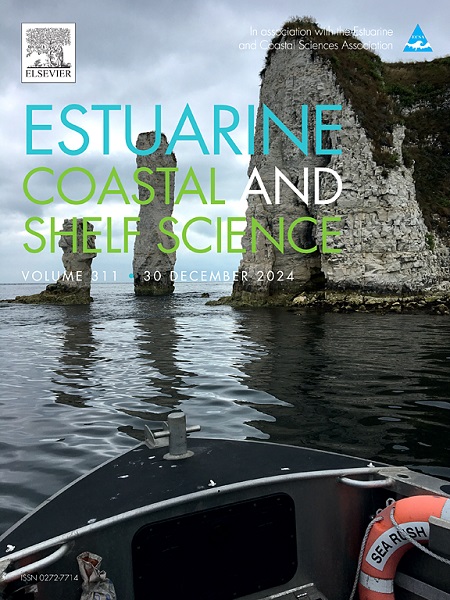Spaceborne lidar observations reveal impacts of inundation on coastal forest structure across the U.S. Mid-Atlantic
IF 2.6
3区 地球科学
Q1 MARINE & FRESHWATER BIOLOGY
引用次数: 0
Abstract
The impacts of accelerated sea level rise (SLR) on coastal ecosystems due to climate change has yet to be fully realized. SLR, combined with an increasing intensity of storm surges, are driving significant regime shifts in vegetation across coastal landscapes, leading to marsh migration and upland forest mortality. However, the specific effects of tidal inundation, stemming from elevated water levels and soil salinity, on forest vertical structure remain poorly understood. In this study, we use spaceborne light detection and ranging (lidar) data from the Global Ecosystem Dynamics Investigation (GEDI) to explore the response of vertical forest structural dynamics in areas highly vulnerable to increased inundation across the U.S. Mid-Atlantic coastal region. We assessed the impact of inundation on three forest structural traits derived from GEDI data. We identified the threshold position where forest structure is no longer impacted and investigated the environmental factors influencing these positions across watersheds to determine the forest's vulnerability to transitioning into marshes. We discovered that watersheds with a high proportion of area below Mean Higher High Water (MHHW) tended to increase vulnerability to forest conversion into marshes whereas watersheds characterized by steeper slopes and drainage densities tended to have positions reflecting lower vulnerability, suggesting an overall increased resistance to marsh migration. These findings highlight the importance of monitoring forest structural dynamics for early detection of upland marsh expansion, with lidar technology offering a potentially valuable tool to enhance our understanding of ecological shifts in coastal environments. Such insights may be essential for evaluating ecosystem responses to SLR and may foster a more comprehensive understanding how SLR and other climate change-induced disturbances will affect the coastal carbon sink.
星载激光雷达观测揭示了洪水对美国大西洋中部沿海森林结构的影响
气候变化导致的海平面加速上升对沿海生态系统的影响尚未得到充分认识。SLR与风暴潮强度的增加相结合,正在推动沿海植被发生重大变化,导致沼泽迁移和高地森林死亡。然而,由于水位升高和土壤盐度升高而引起的潮汐淹没对森林垂直结构的具体影响仍然知之甚少。在这项研究中,我们使用来自全球生态系统动力学调查(GEDI)的星载光探测和测距(lidar)数据来探索美国中大西洋沿岸地区高度容易受到洪水增加影响的地区垂直森林结构动力学的响应。我们评估了洪水对GEDI数据中三个森林结构特征的影响。我们确定了森林结构不再受到影响的阈值位置,并研究了跨流域影响这些位置的环境因素,以确定森林向沼泽过渡的脆弱性。我们发现,低于平均高水位(MHHW)的面积比例较高的流域往往会增加森林转化为沼泽的脆弱性,而坡度更陡、排水密度更大的流域往往具有反映较低脆弱性的位置,这表明总体上对沼泽迁移的抵抗力增强。这些发现强调了监测森林结构动态对于早期发现高地沼泽扩张的重要性,激光雷达技术提供了一个潜在的有价值的工具,可以增强我们对沿海环境生态变化的理解。这些见解对于评估生态系统对SLR的响应可能是必不可少的,并且可能促进更全面地了解SLR和其他气候变化引起的干扰如何影响沿海碳汇。
本文章由计算机程序翻译,如有差异,请以英文原文为准。
求助全文
约1分钟内获得全文
求助全文
来源期刊
CiteScore
5.60
自引率
7.10%
发文量
374
审稿时长
9 months
期刊介绍:
Estuarine, Coastal and Shelf Science is an international multidisciplinary journal devoted to the analysis of saline water phenomena ranging from the outer edge of the continental shelf to the upper limits of the tidal zone. The journal provides a unique forum, unifying the multidisciplinary approaches to the study of the oceanography of estuaries, coastal zones, and continental shelf seas. It features original research papers, review papers and short communications treating such disciplines as zoology, botany, geology, sedimentology, physical oceanography.

 求助内容:
求助内容: 应助结果提醒方式:
应助结果提醒方式:


